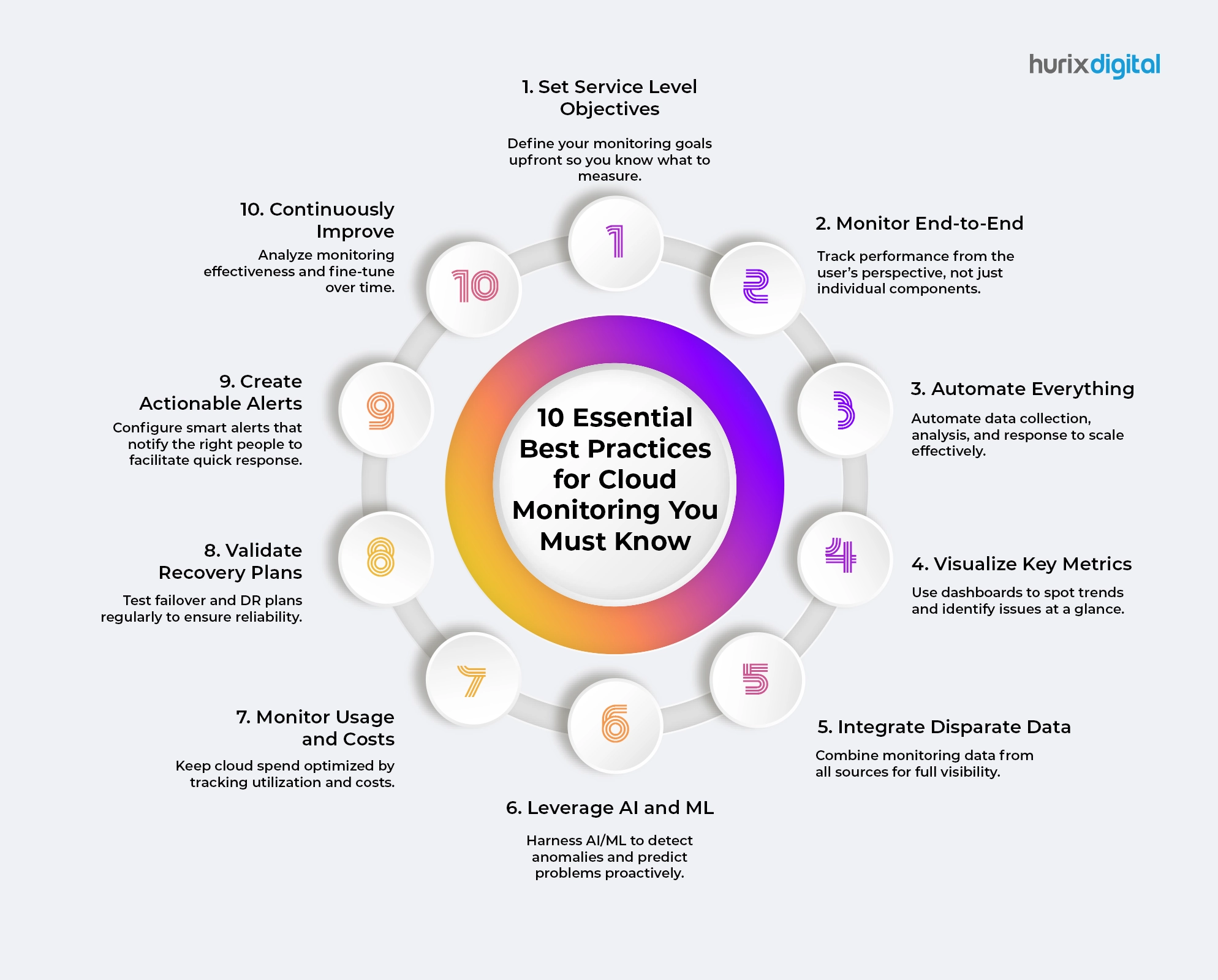As businesses rely more on cloud infrastructure, ensuring performance, security, and cost efficiency becomes essential. Cloud monitoring helps track usage, detect issues, and optimize resources to maintain seamless operations.
A structured approach allows organizations to identify risks early, improve system reliability, and reduce downtime. Following best practices ensures cloud environments remain secure and cost-effective.
Want to optimize your cloud monitoring strategy? Hurix Digital has the solution. Contact Us Now.

Why Cloud Monitoring Matters
Unmonitored cloud environments can lead to unexpected downtime, security threats, and excessive costs. Effective cloud monitoring helps businesses:
- Detect and fix performance issues before they impact users.
- Optimize resource usage and reduce unnecessary expenses.
- Ensure compliance with security and regulatory standards.
- Improve scalability by understanding usage trends.
Key Best Practices for Cloud Monitoring
1. Set Clear Monitoring Objectives
Defining key performance indicators (KPIs) ensures that monitoring efforts align with business goals. Metrics like response time, uptime, and error rates help assess cloud performance effectively.
2. Track End-to-End Performance
Monitoring should not be limited to cloud servers. Observing the full user experience helps detect issues in network connections, applications, and third-party integrations.
3. Automate Data Collection
Manually tracking cloud performance is inefficient. Automated tools help collect data, analyze patterns, and send alerts when anomalies arise, ensuring quick response times.
4. Use Dashboards for Insights
A centralized dashboard consolidates key metrics, allowing IT teams to spot trends and resolve issues quickly. Visualizing real-time data improves decision-making.
5. Consolidate Monitoring Data
Cloud services generate large amounts of data from various sources. Integrating logs, performance metrics, and security alerts provides a unified view for better analysis.
6. Apply AI and Machine Learning
AI-driven monitoring tools detect unusual behavior and predict potential failures, helping businesses prevent downtime before problems escalate.
7. Optimize Costs by Tracking Usage
Monitoring cloud expenses prevents unnecessary resource allocation. Businesses can analyze usage trends to scale up or down based on demand.
8. Test Backup and Recovery Plans
Regular testing of disaster recovery (DR) plans ensures that failover mechanisms work as expected. Preparedness minimizes data loss in case of failures.
9. Configure Smart Alerts
Setting up intelligent notifications ensures that teams receive alerts only for critical incidents, reducing alert fatigue and improving response efficiency.
10. Continuously Evaluate and Improve
Cloud environments change frequently. Regularly assessing monitoring strategies helps refine processes, ensuring long-term system stability and security.
Final Thoughts
By implementing cloud monitoring best practices, businesses can improve efficiency, prevent downtime, and maintain system security. A proactive approach ensures that cloud infrastructure remains reliable, cost-effective, and scalable to meet future demands.



